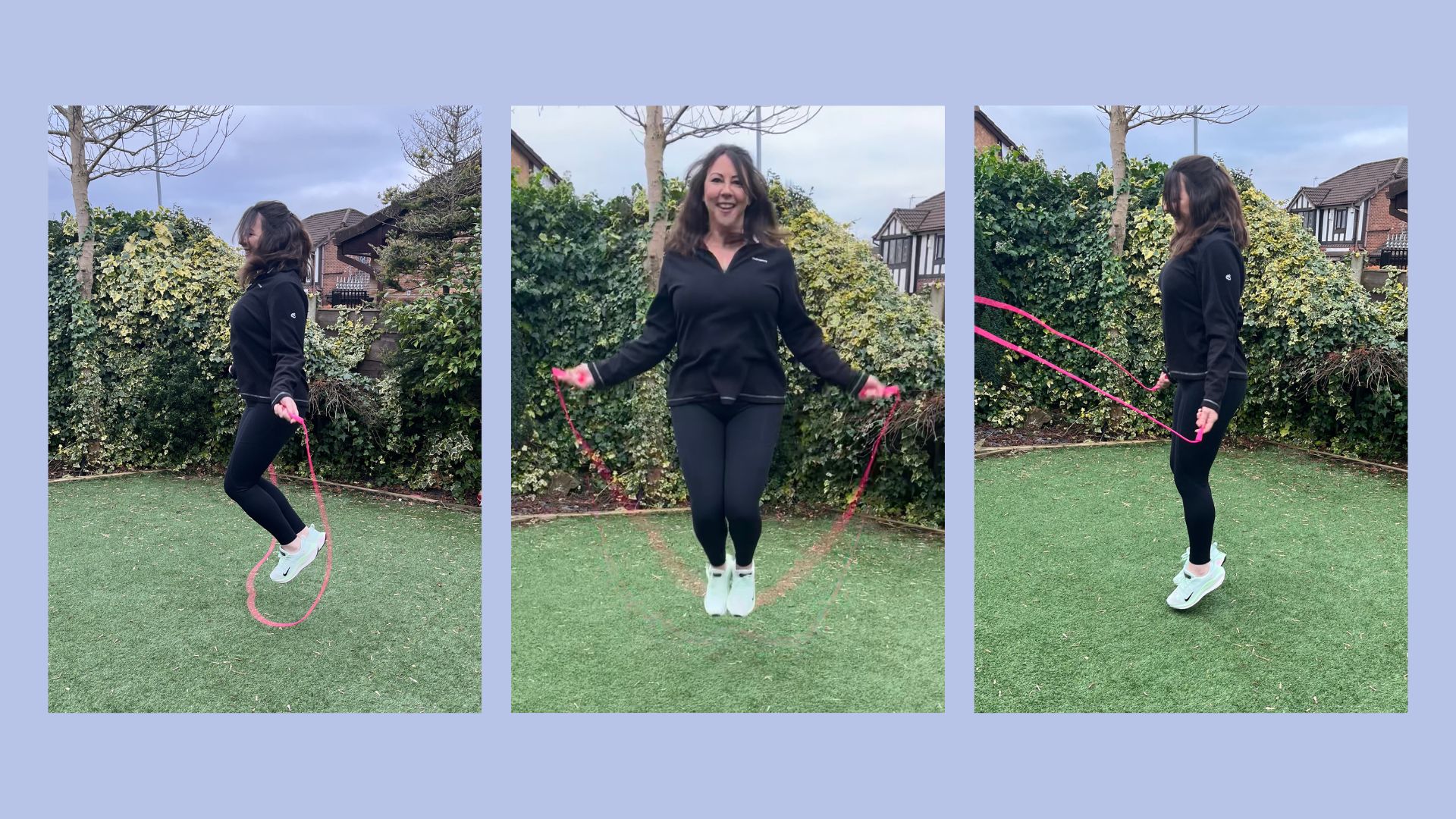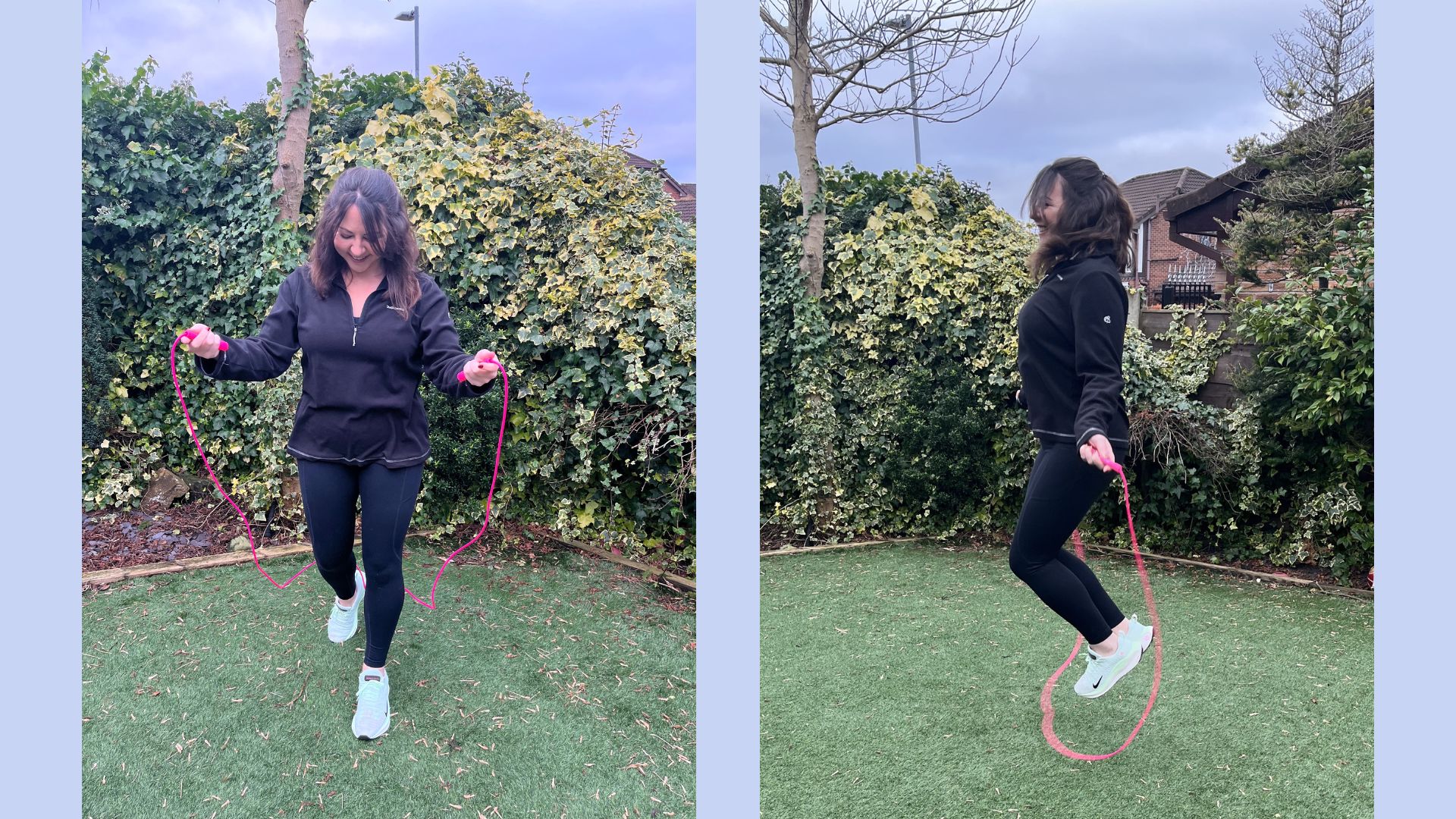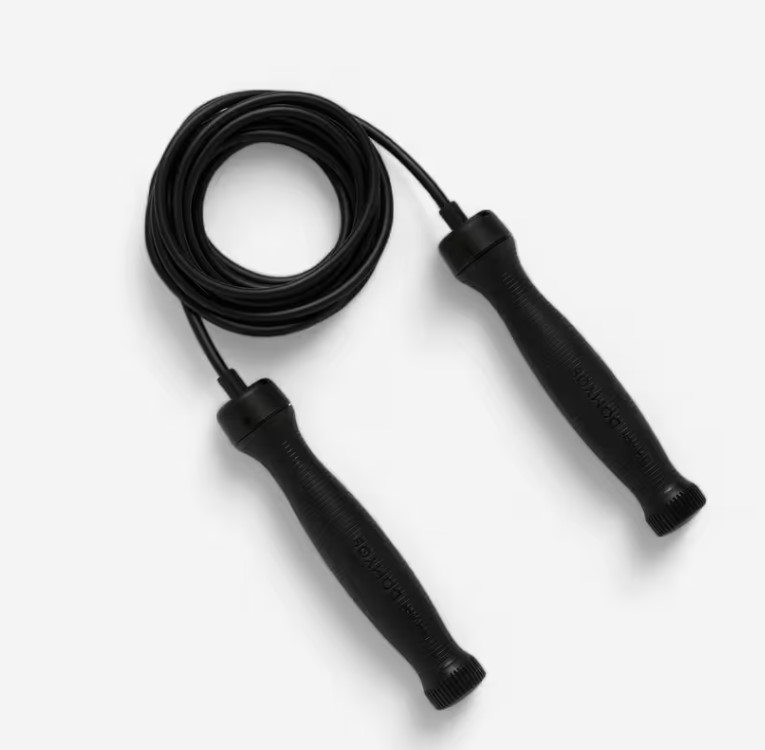
If you need a belly laugh, I can thoroughly recommend grabbing a skipping rope and getting one of your pals to take pictures of you in action. You'll reap the benefits of laughing, even if you don't see the benefits of skipping every day - but I expect you will.
Skipping is expected to be a big trend in 2025, believe it or not. This playground exercise is having a revival - and so it should, it's one of the best cardio exercises for beginners looking to boost fitness, bone health, and mental wellbeing.
Last year, I took on a challenge to try as many new activities as possible and saw myself trying badminton for the first time in 30 years and going for an early morning walk every day, among many others. I'm keen to continue that this year, so I decided to get ahead of this new trend and try skipping for the first time since I was a child when I found skipping to be a breeze. As a 43-year-old, it is a different story.
Benefits of skipping every day
1. It's a full-body workout
First things first, if you're short on time like me, then cardio exercise like skipping is going to give you the most for your time. "It's an excellent way to get some extra movement into your body that's not too straining and with benefits far and wide, including improved cardiovascular health," says Gary Lockwood, certified personal trainer and CEO of 24/7 Fitness. "It's also an excellent muscle toner, working multiple muscle groups, but especially the arms, legs, and core."
As it recruits so many of the muscles in the body and gets your heart rate up, it's considered to be a good workout if you're looking to lose weight as well. "It's a highly efficient calorie-burning exercise, helping with weight loss and fat burning," agrees Sarah Campus, a certified PT and women's health specialist, and founder of LDN Mums Fitness. "For instance, just 10 minutes of skipping can burn as many calories as 30 minutes of jogging."
There is no doubt skipping provides a top to toe workout, from how you hold your head (ideally looking forward, however tempting it is to look at your feet), to physically lifting your feet off the ground. No wonder I was sweating within 10 jumps when I first got going. I had to stop, take a few deep breaths, and compose myself before I started jumping again.
Over the two weeks, I found it surprising how much I had improved. Now, I can typically reach 80-plus jumps without stopping - unless my rope gets tangled. My aim is to keep going until I can jump continuously for five minutes.
2. It's good for your bones
One of the main problems women face is a loss of bone density later in life, causing balance issues, possible fractures, and increasing the risk of osteoporosis. In menopause, we lose the protective benefits of oestrogen on our bones, joints, and muscle tissue.
"Osteoporosis, which affects bone mass density and leaves the individual with increased fracture risk, impacts 3.5m people in the UK, and bone fragility fractures account for more than £4.5bn of direct costs to the National Health Service. This is forecast to rise by 26% by 2030,” says Olivia Houghton, lead beauty, health and wellness analyst at strategic foresight consultancy The Future Laboratory.
A way to avoid this is to do plenty of impact exercises. Houghton points to research from the University of Miami, released only last year, that found skipping to be a safe and time-efficient method to improve bone density in premenopausal people between 18 and 65. "The study also suggested increasing training intensity increased the effect. In postmenopausal individuals, skipping may help mitigate the effects of oestrogen deficiency to guard against bone loss, so much so the Royal Osteoporosis Society recommends 50 jumps a day [for most people]," she tells woman&home.
Of course, this benefit is not something you can witness in the short term, but hearing these sorts of statistics certainly motivated me to start - and keep going. Bone health is a reason why I try and incorporate strength training at least two times a week, too.
3. Skipping every day is good for the brain
Alzheimer’s disproportionately affects women just as osteoporosis does, with females accounting for nearly two-thirds of Alzheimer’s diagnoses. The good news is that a mind-body exercise habit like skipping may make a difference to some people, a report by The Future Laboratory suggests. Just as exercise is good for our bones, it's good for our grey matter.
Exercises that help to build bone, such as shopping, release the hormone osteocalcin, "which increases communication with the hippocampus, the area of the brain associated with memory," Houghton tells me, pointing to a study led by Indiana University School of Medicine.
“Raising osteocalcin levels is considered to improve cognitive dysfunction and have a protective effect on age-related cognitive decline. Although further research is needed, osteocalcin has been mooted as a potential therapeutic option for Alzheimer’s," she says.
But aside from that, even just a few jumps over the rope will tell you skipping is a great challenge for the brain, which can only be a good thing. I am all for futureproofing my mind and body in whatever ways I can, and that includes moving and using my body and brain in different and challenging ways.
"I also recommend skipping for those who are looking to improve their coordination and balance, as it can help enhance motor skills by synchronising hand, eye, and foot movements,” says Lockwood.

4. It's convenient
There are practical benefits of skipping every day, as well as physical ones. A skipping rope is a portable piece of equipment that is relatively cheap to purchase (ropes start at less than £10) and can be used almost anywhere as one of the easy ways to exercise at home.
During the two-week trial period, I used a skipping rope in the sitting room of my small, terraced house, in my compact backyard, in my friend's garden, and travelled with it when I visited family. Unlike other at-home gym equipment, such as a walking pad, this is doable. I could also take it to the gym if I wanted to - but that's a step too far for now. I am still building up to skipping in public.
5. Skipping can improve your mood
As with any activity, to see results you need to be consistent and to do that, it helps if you actually enjoy what you are doing. Despite panting and sweating my way through these two weeks, I have enjoyed using a skipping rope again.
"Skipping is a form of exercise, so it releases endorphins, which can improve mood and reduce anxiety and stress," says Lockwood.
I've skipped at different times of the day and found it has helped me to feel more motivated, boosting my mood on dark mornings and combating the afternoon slump. But don't just take my word for it, as Houghton says that "studies have found a reduction in anxiety levels and rates of depression [in those who skip regularly]."
How often should I skip to see the benefits?
As a starting point, aim for two to three skipping sessions a week, suggests Lockwood, with five to 10 minutes of skipping time in total. "A good split would be short intervals of 30 to 60 seconds, with short rest breaks in between. After a few weeks, gradually increase the duration as your stamina improves, until you get to 15 to 20 minutes," he suggests. "Trust me, you won’t want to do it for any longer than that.”
That being said, if you're starting from scratch, you should just aim for a little more than what you can do right now. "If you are feeling a bit unsure, perhaps start my marching on the spot, then start by skipping on the spot, then jumping on the spot and when you feel confident enough with that you can then introduce the rope," says Campus.
“As for technique, keep your elbows close to your body, use your wrists, not your arms, to rotate the rope. Jump just high enough to clear the rope, about 1-2 inches off the ground, and land softly on the balls of your feet to reduce the impact on your joints," she suggests.
Common mistakes when you are starting out, as I can vouch for, are kicking your feet backwards and looking down, so keep your gaze up.
How quickly can I expect to see the benefits of skipping every day?
Everyone has different levels of fitness so it's a difficult question to answer, says Lockwood - but he adds: "If you stick at it, as a general rule, within two to four weeks, you should expect to see improved coordination and balance, higher energy levels and stamina," he says. "You may also start to see weight loss. However, it takes the body a while to adjust. In the long term, there will be a noticeable change in muscle definition, improved cardiovascular health and, of course, enhanced mental clarity.”
Two weeks is not a long time to see drastic changes in how I'm looking, but the fact I can skip for considerably longer than when I began suggests my stamina and strength are beginning to improve - and that gives me the incentive to continue.
What sort of skipping rope should I use?
Choosing the right rope is important for comfort and ease of use for an effective workout, says Campus. "Speed ropes are good for beginners as they're lightweight and smooth, but beaded ropes are a bit heavier, which can offer more control. You can also get ones with adjustable lengths and with comfortable handles," she says.
You can also get ropes with a counter and weighted ropes to increase strength, just as you can get a weighted vest to make walking harder, although this is not advisable for beginners.

After reading positive reviews, I opted for Dope Ropes' Beginner Jump Rope Bundle. This included the Cardio 2.0, a 5mm PVC rope, and their signature beaded jump rope. Both come in brightly coloured colourways, are adjustable, and are aimed at novices. The former moves faster through the air, so they describe it as more conducive to cardio workouts.

Counting how many jumps you do every session, per 10 minutes for example, can be a useful way to monitor your progress. The LXMTOU rope from Amazon has built-in ball bearings that fully rotate to prevent the rope from twisting for the most accurate count.

A weighted skipping rope can offer more stability than a cardio-focused, lightweight rope, which may be beneficial to those new to the activity. It also offers a full-body workout, with resistance on the arms, shoulders, core, legs, and back.
Is skipping suitable for everyone?
Skipping is a great exercise for many people - but some should avoid it. "If you have severe joint issues or arthritis, I recommend consulting with your doctor before partaking. If you have a history of stress fractures or even a heart condition that limits HIIT exercises, I would also opt for another exercise instead [there are lots of benefits of walking, for example]," says Lockwood.
"It is extremely important to consult your doctor beforehand if you are unsure," he says.







